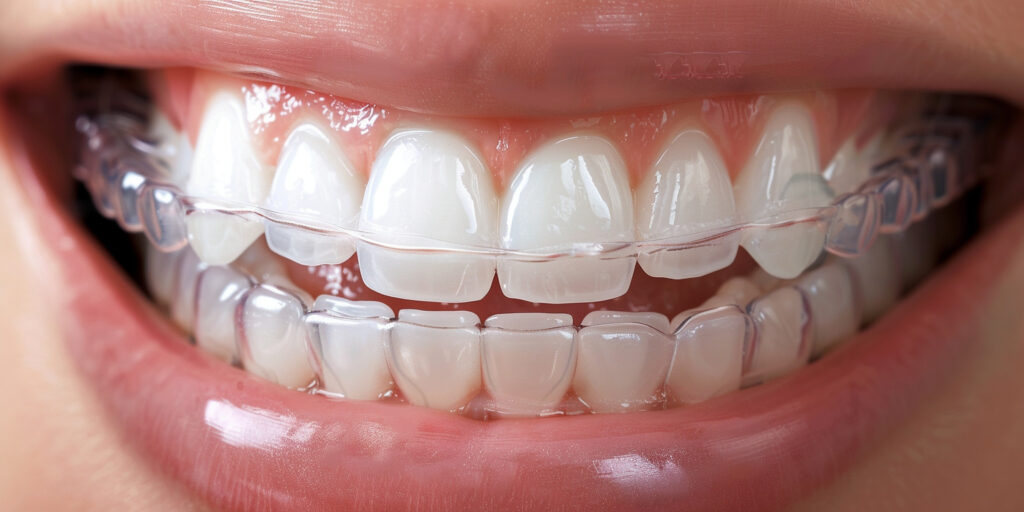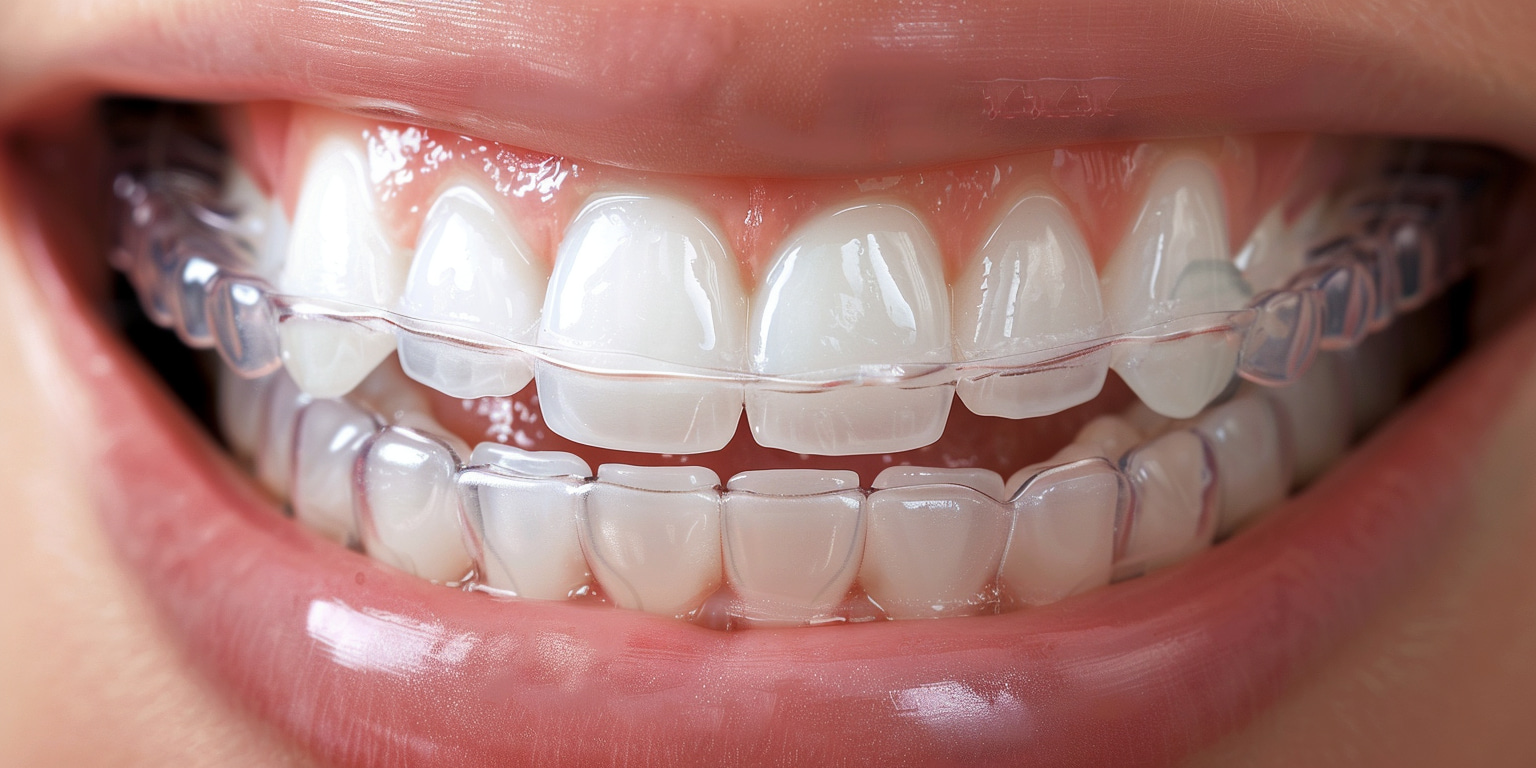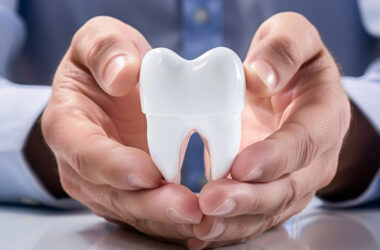Invisalign clear aligner technology is the go-to solution for the correction of malocclusion.
Malocclusion, or the misalignment of teeth, is a condition that affects at least 65% of adults living in the United States, according to a National Institutes of Health report done in 1998. The report states, in part, that the “Irregularity is severe enough in 15% that both social acceptability and function could be affected, and major arch expansion or extraction of some teeth would be required for correction.”
Malocclusion is a condition dentists pay close attention to because of its effect on the “correctness” of bites. If you have misaligned teeth, your top and bottom teeth do not touch or line up properly when you bite or chew.
Your teeth wear and tear as a result, and you may even have persistent headaches from the frequent pressure being applied to odd areas of your face. You might also experience the impediment of your speech coupled with loss of sleep if your case is severe. malocclusion is corrected through the placement of braces or clear aligners to help correct it.
Invisalign is an invisible orthodontic technique designed to reposition and realign your teeth gradually through the use of a series of custom-made, clear “teeth trays” made from a digital image of your teeth. Each tray in the series is shaped slightly differently from the next.
Also read: Is Dental Bonding Covered by Insurance?
The custom trays—one each for your upper and lower teeth—work by exerting gentle pressure on your teeth and thus effectively pulling them back into their properly aligned positions. They are worn for two weeks at a time, after which the next set in the series is worn.
A malocclusion treatment will usually last for between 9 to 24 months, depending on how bad the misalignment is, the number of hours in a day that you wear the customized trays, and the amount of displacement of your misaligned teeth your dentist is trying to achieve.
The Process for Fixing Your malocclusion Using Invisalign
There is an 8-step process for getting your misaligned teeth treated with Invisalign.

- Consultation with your Dentist
There is an initial consultation with your dentist. During the consultation, your dentist will conduct preliminary diagnostics, including imaging of your denture as well as a “bite registration,” to determine if you will benefit from an Invisalign treatment.
Usually, your dentist will be able to use medical imaging to show you what your new denture will look like after treatment.
- The Creation of a Treatment Plan
After the consultation, your dentist will create a treatment plan custom-made for you. The idea is to let you know what treatment options are optimal for your teeth misalignment and how involved the process will be for you. Your dentist will also prepare you for any eventuality; for example, the use of extra procedures like the placement of attachments and buttons to aid the effectiveness of your treatment.
- Customization of Your Set of Invisalign Clear “Teeth Trays”
At this stage, your dentist will send your imaging results and treatment plan to Invisalign labs. Invisalign Technicians will then create your set of customized teeth trays from BPA-free plastic. Your set of clear teeth trays will get to your dentist’s offices in about four weeks after sending your imaging results to Invisalign.
Also read: Pros and Cons of Having Two Dental Insurance
- Your Invisalign Treatment Starts
Your dentist will call on you to pick up your set of clear teeth trays and instruct you on their use. For example, you are to wear each teeth tray for a minimum of 22 hours in a day for two weeks. You take out the teeth tray only when you want to eat and brush or floss your teeth. It is important to use each teeth tray for the minimum 22 hours in a day so your teeth realignment don’t fall behind schedule and hence hinder subsequent teeth trays from properly fitting.
- Monthly Assessment Visits to Your Dentist
There will be monthly meet-ups with your dentist as part of the treatment process. The meet-up is for the purpose of checking on the progress your teeth are making; especially to see if the realignment is coming through as planned. Also, any issues cropping up are addressed appropriately.
You should expect your dentist to perform some interproximal reductions on your teeth during these monthly visits. It is a simple procedure where your dentist uses a file or a drill to remove layers of enamel in between your teeth to give them more room to realign. The procedure is painless.
- Customization of an Additional Set of Invisalign Clear “Teeth Trays”
There might be a need for your dentist to retake a new set of imagery of your teeth and send same to Invisalign for the fabrication of a new set of “refinement” clear teeth trays. This happens usually if your teeth realignment are not progressing as envisaged.
- Fixing On of Retainers
As soon as you conclude treatment with your set of clear teeth trays, including any refinement trays your dentist may have prescribed, your dentist will place a set of retainers in your mouth. Retainers are clear teeth trays just like aligners, but they do not pull on teeth to realign them; rather, they keep your teeth in a permanent stationary position so they don’t go out of alignment again as they strengthen in place. You should expect to wear your retainers for at least three months for best results.
- Show Off Your Beautiful Teeth
Finally, you can show off your beautiful denture to the world. The typical Invisalign malocclusion treatment will cost upwards of US$3,000. Paying that out-of-pocket might not be an option for you, so you are probably in search of dental insurers that will provide you with policies that have Invisalign as a benefit. In the next section, we list the top 5 dental insurance that covers Invisalign.
Top 5 Dental Insurance That Covers Invisalign
Dental insurance policies differ in their coverage of orthodontic treatments from one provider to the other. Always check to see if they cover the bare minimums like your consultation, denture X-rays imaging, tooth extractions and placement, teeth alignment and post-treatment. Also, make sure that Invisalign treatment is covered.

Delta Dental is the largest provider of dental insurance with orthodontic benefits in the United States. Delta Dental has 80 million people enrolled. Also, it has a network of 128,000 dentists and 198,000 practices across the United States where its enrollees can access dental care.
Delta Dental processes hundreds of millions of claims in a typical plan year.
Two of Delta Dental’s dental insurance plans with orthodontic benefits are the Dental for Everyone Gold PPO at US$50.46 per month and the Immediate Coverage Plan PPO at US$93.16 per month.
The Delta Dental Premium PPO will provide coverage for 50% of your Invisalign care after you pay a US$50 deductible; although there is a waiting period of between six to twelve months, depending on which state you are in in the United States.
Delta Dental also covers HMO plans with adult Invisalign benefits in several states of the United States.
Anthem is the go-to provider if you are shopping for a dental insurance plan for your child. Their Essential Choice PPO Incentive Plan provides coverage for 50% of your child’s orthodontic treatment after a US$150 lifetime deductible. Another plus is that there is no waiting period.
The coverage it provides for orthodontics is capped at US$500 per year and US$11,000 in a lifetime; which is rather little.
Importantly, Anthem does not cover orthodontics treatment for adults, so you might have to access it through the Affordable Care Marketplace.
Cigna is home to 18 million enrollees of her dental insurances, and offers a large PPO dental network in the United States.
The Cigna Dental 1500 plan (US$39 per month) covers as much as 50% of orthodontic care, including Invisalign, though a US$1,000 maximum coverage applies. The general dental insurance coverage is US$1,500 per year after a US$50 (individual) or US$150 (family) deductible.
Cigna covers Invisalign treatment for both children and adults.
Also read: Does Dental Insurance Cover Wisdom Teeth Removal?
Guardian is the dental insurance provider of choice to 8 million enrollees in the United States. There are four dental insurance plans available and access to care with more than 120,000 providers. Access to Guardian’s basic care on many of its policies does not require a waiting time.
Guardian offers both PPO and HMO dental insurance plans.
Two of Guardian’s dental insurances that provide coverage for Invisalign are the Guardian Diamond (US$37 per month) and the Guardian Achiever (US$29 per month).
Spirit prides itself on being the “no-wait” dental insurer in the United States. That means you get to access dental care immediately (that is, no waiting period) with any of her plans.
Spirit’s Pinaccle PPO Plan (US$48 per month) is perhaps the most popular and provides Invisalign care for children up to an annual maximum of US$5,000.
Spirit has no dental insurance plan that covers adult Invisalign treatments.
Conclusion
Even among the top 5 dental insurance companies that cover Invisalign, the details of plan costs and benefits vary. So, as you shop for dental insurance that covers Invisalign, always seek clarity about the cost of the plans, which network of dentists and practices you can access care in, what waiting period applies, and whether or not you, your spouse, and your children will be able to access Invisalign treatment under the plans.
We strongly encourage you to schedule a consultation with your dentists to discuss your specific situation and explore all available options. They can guide you through the insurance process, recommend financing solutions, and create a personalized treatment plan to restore your oral health and confidence.







